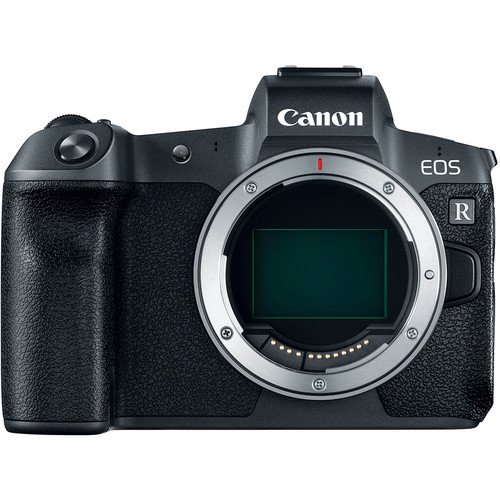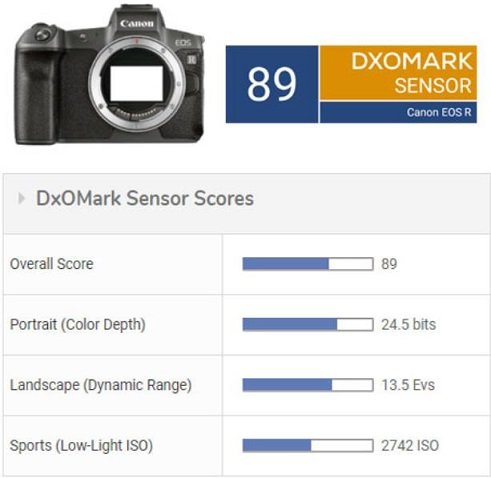Canon EOS R Gets 89 Points Overall Score at DxOMark
DXOMark completed their tests and review of 30.3MP sensor inside the Canon EOS R full frame mirrorless camera ($2,299): The Canon EOS R gets an outstanding overall DxOmark score of 89 points, with a combination of 24.5 bits color depth, 13.5 EV dynamic range, and 2742 ISO low-light score – Canon has equipped the EOS R with one of its best sensors—and that, together with some very interesting lenses, signals that it’s taking “mirrorless” very seriously.
Canon EOS R Key Features
- 30.3MP Full-Frame CMOS Sensor
- DIGIC 8 Image Processor
- UHD 4K30 Video; C-Log & 10-Bit HDMI Out
- Dual Pixel CMOS AF, 5655 AF Points
- 3.69m-Dot OLED Electronic Viewfinder
- 3.15″ 2.1m-Dot Swivel Touchscreen LCD
- Expanded ISO 50-102400, 8 fps Shooting
- Wi-Fi and Bluetooth, SD UHS-II Card Slot
- Multi-Function Bar, Dual Pixel RAW
Image quality compared
A familiar pixel count of 30MP that’s used only in one other Canon camera currently—the Canon EOS 5D Mark IV—suggests that Canon uses the same sensor or a variant of it in the EOS R. Our testing appears to bear that out, as the EOS R’s sensor results are very close to those of the EOS 5D Mk IV. Comparing the EOS R”s ISO 2742 against the EOS 5 D Mk IV’s ISO 2995, there’s less than 0.13 EV difference in low-light ISO (Sports), just a 0.3-bit difference in color depth (Portrait) at base, and a difference of less than 0.1 EV at the base ISO of 100 in dynamic range (in other words, both cameras have effectively the same dynamic range).
As the tabulated results show below, the sensor in the Canon EOS R isn’t all that far behind the 24 MP sensors in the Nikon D750 and in the mirrorless Nikon Z 6 and Sony A7 III. This is particularly true with respect to low-light performance, though out the three, the Sony A7 III performs a little better than the other two. All three excel in dynamic range and color depth.

Conclusion from DxOMark:
Although we’ve not directly compared the two Canon 30MP full-frame CMOS sensors side-by-side in this review, it’s not surprising that the results for the EOS R are very close to that of the Canon EOS 5D Mark IV. Both appear to use a similar sensor, with some of the differences likely attributable to the increased number of AF points available in the EOS R.
While not possessing the low noise levels of the Nikon Z 6 and Sony A7 III, which have slightly lower pixel density and BSI architecture in their favor, the EOS R’s sensor is one of Canon’s best. It comes very close to the one used in the pro-level EOS 1Dx Mark II, particularly in its low light, high ISO capabilities.
With a low noise floor, the dynamic range of the Canon 30MP sensor greatly improves over its predecessors. The EOS R is much more capable of handling high-contrast scenes, thus allowing a photographer faced with protecting highlights at capture to lift shadows in post-processing without incurring some of the noise penalties.
With its first model in a new system, Canon has equipped the EOS R with one of its best sensors—and that, together with some very interesting lenses, signals that it’s taking “mirrorless” very seriously.
Canon EOS R: $2,299 at Amazon, B&H, Adorama
$200 off on Canon EOS R with 24-105mm Lens: $3,199 at Amazon, B&H, Adorama
You can read the full review at DxOMark.

